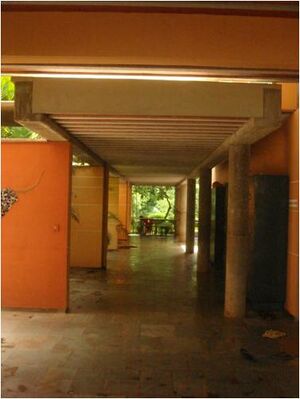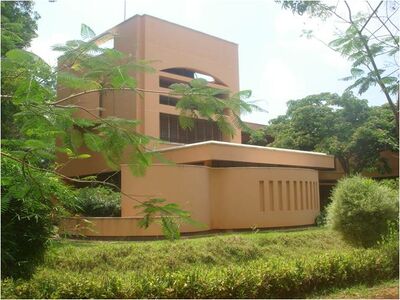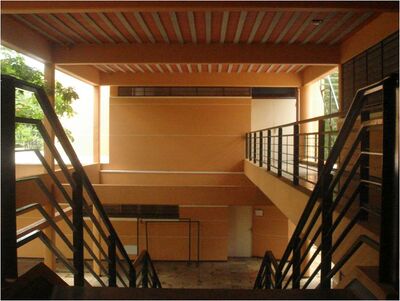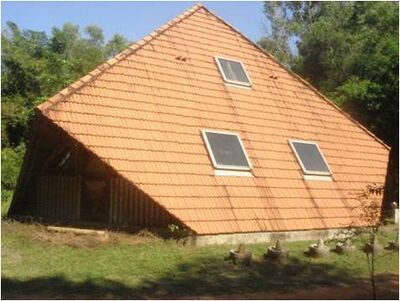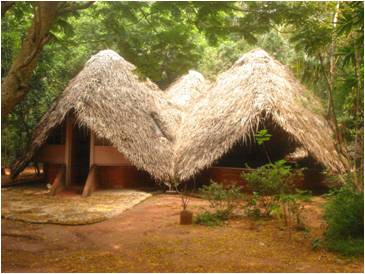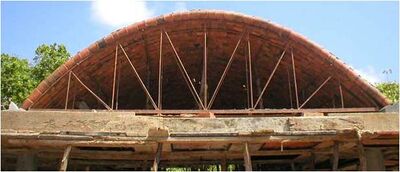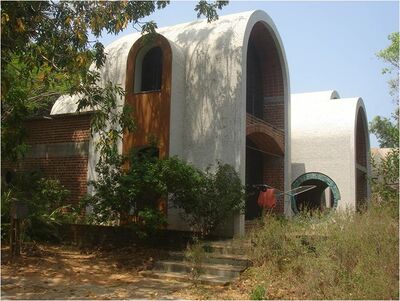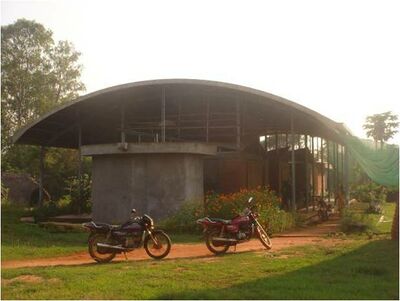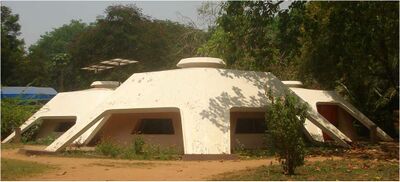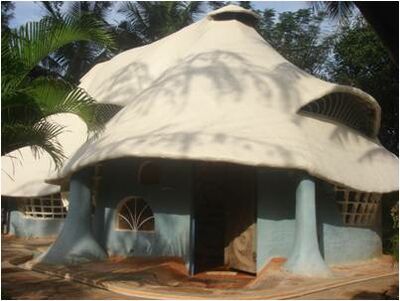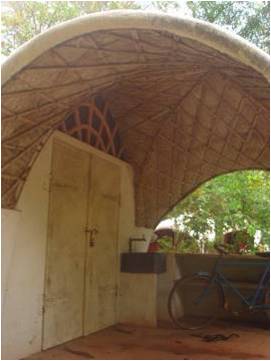Roofing Techniques

The following article is a documentation of varied roofing techniques that are practiced in Auroville. As there are a number of architects from different parts of the world practicing architecture in Auroville the one line in common that they all follow is so as to how things can be done in different ways. how to make a structure lighter? how a structure could be more efficient in terms of the material we choose to build it with and its economy. Having a context like Auroville to start from in itself houses a land of opportunities. To start with , the soil , the climate and the local artisans are some of the factors. You will find here compilation of information over the topic with a wide variety of technique and skill .
A roof is defined as the covering on the uppermost part of a building. A roof protects the building and its contents from the effects of weather. The characteristics of a roof are dependent upon the purpose of the building that it covers, the available roofing materials, the local traditions of construction and wider concepts of architectural design practice, and may also be governed by local or national legislation. A verandah may be roofed with material that protects against sunlight but admits the other elements.
The material of a roof may range from banana leaves, wheaten straw, terracotta tiles, aluminum sheeting and precast concrete. The durability of a roof is a matter of concern because the roof is often the least accessible part of a building for purposes of repair and renewal, while its damage or destruction can have serious effects. Some roofing materials, particularly those of natural fibrous material, such as thatch, have excellent insulating properties. For those that do not, extra insulation is often installed under the outer layer. Newer systems include solar shingles which generate electricity as well as cover the roof. There are also solar systems available that generate hot water or hot air and which can also act as a roof covering. More complex systems may carry out all of these functions: generate electricity, recover thermal energy, and also act as a roof covering.
In Auroville from contextual and vernacular understandings, at times the most convenient and in some ways, cost effective roofing system is the pitched roof type. Although such an approach to the casual observer may appear easier to put together in terms of time for assembly, and acquisition of components, the design of the entire structure can actually prove to be rather complex as it involves the coming together of a multitude of parts, each with their own specific requirements and variability in terms of material potential. In many cases the architects who designed in Auroville adapted tried and tested methods, remolding them into innovative new manifestations of raditional techniques, giving rise to a wide range of variety in form, aesthetic and presence. Therefore to fully understand how the dynamics evolved, one should clearly outline definitions of terms used to describe elements of these roofs, so as to, at the least have a reference for the words in their original meaning, even though in these sometimes radical examples the words may not apply.
A note about a roof in our tropical monsoon climate and the heat in the spaces below it: except for keet roofs all others will get quite hot and radiate that downwards. Thick roofs will also store this heat into the night and can conduct downwards to walls below: the building becomes a "battery" for day time heat. For low buildings tree shade is the best solution. In apartment buildings, the top floor will mostly be the hottest by a few degrees Celsius. Putting white paint or tiles is good but will not prevent all of this heat build up. A more effective way is to make an additional "covering roof" to prevent the solar heat up of the main roof with a (big) air gap below as is done (partially) in the new community west of Creativity.
The flat roof that we most commonly know and perhaps use was found to be very differently used in ways that make it lighter, stronger and more durable.
The first thing that we could probably observe in a flat slab is its extensive use in concrete and steel that naturally results in an increase in the cost of the structure. Second is as a result of all its material being steel and concrete how heavy can the structure get ? And lastly how much of energy does it consume during the day considering how hot can concrete and steel get ?
The following techniques shows us how flat roof’s can be much lighter and at the same time more efficient and durable by using the same materials in a different way.
The Filler Slab technique for example was one such technique that we had come across in which was found to be experimented in different ways. The idea is that a filler is used to reduce the load of concrete that is actually used in the slab. Materials such as Hollow Terra Cotta blocks to inverted pots are used.
The different ways in which a pitch can be achieved considering what material is being used plays an important role in how efficient the building can actually be. Few of the constraints that a pitch roof is normally put to test is its span which naturally tends to test the strength of the material which is used to achieve the pitch. Reinforced concrete rafters and wood are few of the materials that have been innovatively used in our study. The frame from which the pitch is made is finished with materials from terra cotta tiles to thatch. Thatch is used in different ways as it proved to be at times in-efficient to the climatic and termite conditions. in some areas thatch was found merely to be palm leaves and else where was reinforced with straw bamboo strips and palm leaves. This was to provide a more cooler effect in its enclosures. Here is some US research result that decreases the heat for all pitched roofs (except for thatch, which is already cool).
- Roofing with terra cotta tiles
- Composite roofing with wooden rafters and pre-cast reinforced concrete rafters
- Roofing with bamboo and thatch
- Roofing with wooden rafters and thatch
- Roofing with wooden rafters, thatch and bamboo mat
- Roofing with wooden rafters and aluminum clad sheet
- Composite roofing with wooden rafters , thatch and aluminum clad sheet
- Roofing with ferro cement
Domes and vaulted structures were constructed with materials such as bricks, steel and a locally termed material called “ guna tubes “. This is conical in shape made of terra cotta and is used to construct small span vaults. Another local term that we would come across is “ aachikal “ which is the local term of a small brick, which is used also in constructing vaults.
This category is a compilation of roofs that have a random structural frame work of its overall form. The material found that were extensively used under this subject was split bamboo ( bamboo cut in half longitudinally ) and ferro cement.
- Roofing with ferro cement and reinforced concrete beams
- Roofing with ferro cement
- Roofing with bamboo reinforced concrete
- Roofing with bamboo and fabric cement mix
- Roofing with bamboo and fabric
